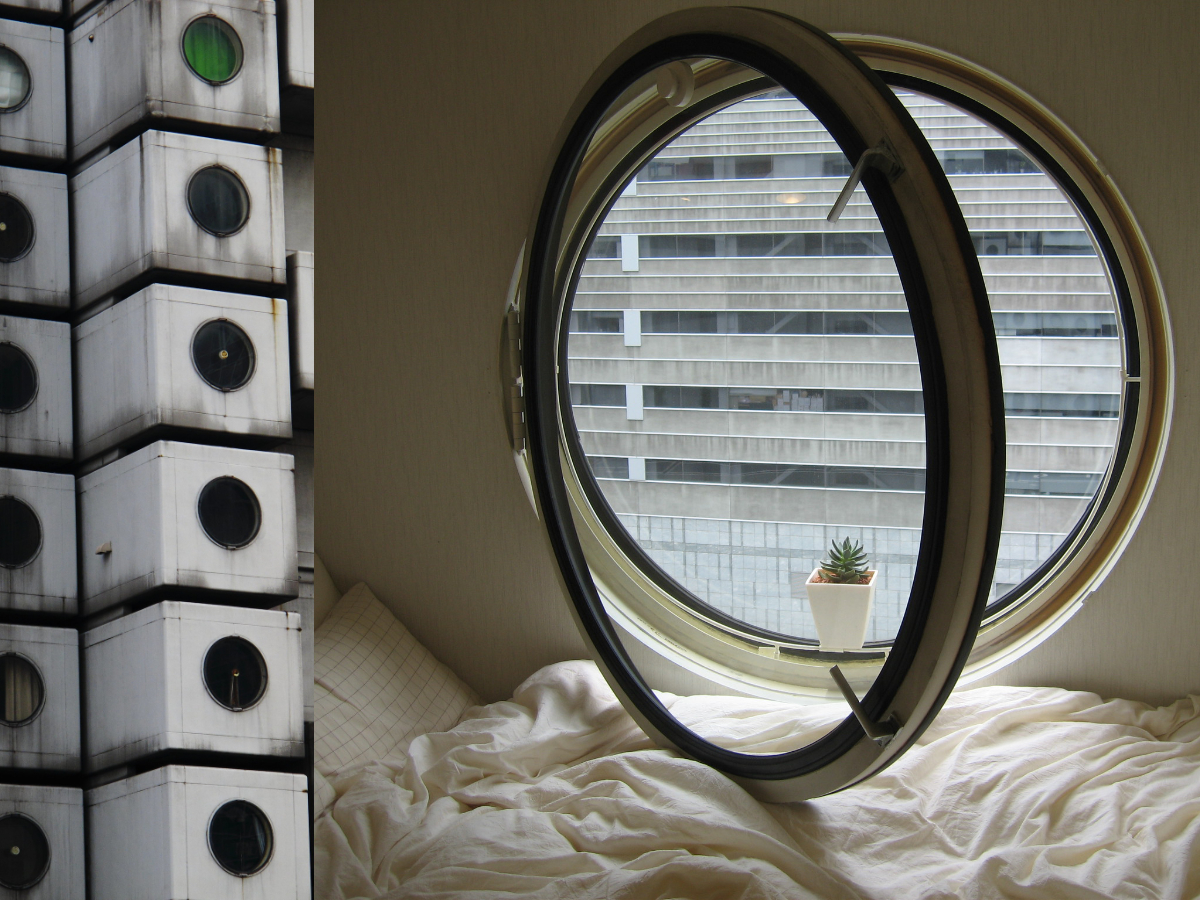
Source: Flickr/Creative Commons
Capsules from Nakagin Tower find new life at museums and accomodation venues
- Source:
- Flickr/Creative Commons
Related Article
-

Japanese shrine-style doghouse crafted by temple carpenters is a whopping $150,000
-
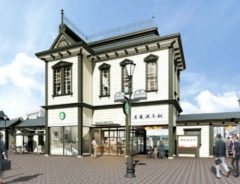
Meiji Era-Style Starbucks To Open Up Outside Hot Springs That Inspired Spirited Away
-
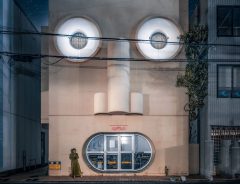
Twitter delighted and terrified by Kyoto building that looks like a robot
-
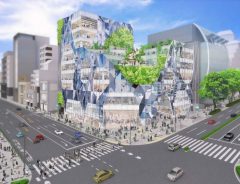
New kaleidoscopic mirrored wonder building planned for Harajuku’s Jingumae crossing
-

World’s Tallest Wooden Tower to Grace Tokyo’s Skyline and Become Tallest Skyscraper in Japan
-
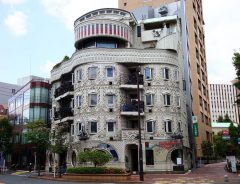
Waseda El Dorado: a fabulist extravaganza among Tokyo’s bland modern buildings


Designed by celebrated Japanese architect Kisho Kurokawa in 1972, the Nakagin Capsule Tower Building is a once-futuristic, now retro-and-deteriorating nod at the Metabolism Movement which started in Japan following the war.
Inspired by the movement which fused architectural ideas with organic biological growth, the tower consists of two concrete shafts and 140 self-contained prefabricated capsules which can be connected and combined to create different layouts and larger spaces.
The building was originally designed to inspire further experimental structures that could fit into an interconnected supercity (an idea desired by Kurokawa’s teacher, and architect behind the Hiroshima Peace Memorial Park, Kenzo Tange), but when the Metabolism Movement moved away from Japan after the 1973 Oil crisis, the building became one-of-a-kind. Despite having such a stand-out design, Nakagin Capsule Tower Building somehow managed to blend in and become a part of Tokyo’s architectural landscape. The structure has drawn the attention of architectural specialists, photographers and the media for more than 4 decades, but as the building approaches it’s semi centennial anniversary the news that it will be demolished due to rapid deterioration has hit hard amongst fans.
Talks of demolition began way back in 2006, but it wasn’t until earlier this year that the plans were finalised. News of the demolition was opposed by Kurokawa, who instead suggested renovating the individual capsules, but when he passed in 2007, it became clear that the innovative ideology behind the unique building had died with it’s master.
In 2014, former resident Masato Abe set up the ‘Save Nakagin Tower’ project to accumulate donations and purchase the capsules in order to save the tower from demolition. For several years the project has held meetings with both domestic and international developers to find ways to save the tower, but due to the influence of COVID-19 all discussions were suspended, and in March of 2021 it was announced that the management company had resolved to sell the site.
If the Nakagin Capsule Tower Building is to be dismantled as it is, one of the last remaining buildings inspired by the Metabolism Movement will be lost. It is because of this reason that the project, now known as the Nakagin Capsule Tower Building Preservation and Regeneration Project has persuaded the purchasing company to allow them the rights to acquire multiple capsules from the building. Together with the cooperation of Kisho Kurokawa Architects, the project will remove and regenerate up to 139 of the 140 capsules from the building.
The plan is to keep Nakagin alive by disassembling each capsule and donating them to a wide range of venues such as museums and certain accommodation facilities. You might see this distribution of Nakagin Tower’s capsules as breaking apart something iconic, but in actuality the plan itself fits in rather well with the original Metabolism concept of the building. By finding ways to ‘reuse’ the structure, the Metabolism Movement that made Nakagin Tower the architectural icon that it was, continues by connecting each individual capsule to a new purpose.
Through the project, the Nakagin Capsule Tower, which once was one, will become many.
With the cooperation of Kisho Kurokawa Architects and Urban Design Office, the Nakagin Capsule Tower Building Preservation and Regeneration Project will ensure each capsule is refurbished to it’s ideal shape and interior.
Funding for the project will be covered by various crowdfunding events and the publishing of a book that documents the history and characteristics of the Nakagin Capsule Tower Building and each of it’s capsules in their current state.
Some of the recycled capsules will be donated to various museums located across Japan. These refurbished capsules will convey the idea and history of the Metabolism movement. As such a famous figure within the Metabolism Movement, the project believes it is their responsibility to provide true-to-life capsules from the building in order to convey the ideology and history of the movement.
An example capsule is currently on display at the Museum of Modern Art Saitama, which, like the Nakagin Capsule Tower Building, was designed by Kisho Kurokawa.
Due to the limited number of capsules available, there were several requests from certain museums, including the Pompidou Center in Paris that could not be met.
Since 2018, the project has been providing the general public with the opportunity to rent a capsule out on a monthly basis. Up until recently, these monthly rentals have given more than 200 people a private outlet to live, work or simply chill out from.
The rentals were a particular hit amongst capsule fans, who could find thrills in the retro aesthetic and vibe. Those who were lucky enough to rent a capsule would tell you that their full charm cannot truly be felt and understood without staying in one. It’s for this exact reason that the remaining capsules from the building (that are not donated to museums) will be refurbished and utilised at several commercial and accommodation facilities throughout Japan.
Crowdfunding for the project began on 2 July 2021. Donors will receive returns in the form of capsule accommodation (following renovation and distribution to various locations) and the book ‘中銀カプセルタワービルの記録(仮’ (Lit. Record of Nakagin Capsule Tower Building (tentative)) which will survey and record the measurements and details of each capsule as they currently are. With the cooperation of owners and residents, recordings have already been made for more than 50 of the capsules, and the book is scheduled to be published and released by Soshisha publishing in February of 2022.